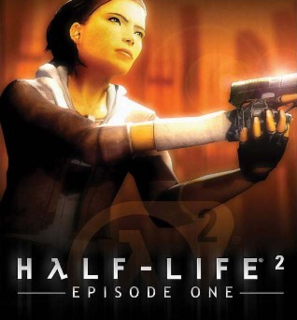Episode One feels like the icing on top of the cake that is Half-Life 2.
The highlight of Episode One is Alyx, your ally on whom you rely more than she needs you. The artificial intelligence for Alyx is top-notch. Dialogues for Alyx are extremely well-written, subtly yet clearly providing characterization, mission objectives and humour. One of my favourite moments interacting with Alyx is hearing her commenting, “Is Dr. Kliener actually telling everyone to get busy?” while looking at you half-embarrassingly and flirtatiously.
Alyx is an accomplished warrior, too. She will automatically provide cover and dispose of most threats automatically, and she accomplishes these tasks extremely well. In fact, I found myself not needing to fire my weapon in some situations and Alyx would clear the area of the monsters. In that sense, Alyx is a great companion on the battlefield, but this can also mean making the game a bit too easy at times. (Overall, I found Half-Life 2: Lost Coast more challenging than Episode One.) However, you often have to solve other puzzles or support Alyx during combat. One of the most memorable first-person shooter moments to date involves you lighting the darkness using your flashlight as Alyx mows down endless hordes of zombies. Cooperating with Alyx, is indeed a refreshing addition to the familiar first-person shooter gameplay.
Although Alyx helps you with a lot of the combat, you are still on your own when solving physics/gravity gun puzzles. Compared to Half-Life 2, Episode One has better puzzles that are integrated into combat. My favourite has to be using the gravity gun to clear obstacles that are obstructing Alyx’s view, so she can snipe the enemies that are attacking you at that time.
Episode One does not feature any new weapons, vehicles or locales. This is rather unfortunate because the elation of getting the gravity gun, driving the gunboat and dune buggy, and venturing into new environments like Ravenholm in Half-Life 2 were key to making the previous game impressive. Still, Episode One does introduce the Zombine, the zombified Combine soldier. This new monster is deadly, so you will be glad Alyx is often around to help you out. There is a moment or two when levels, such as the hospital in Urban Flight, feel too long, as though the developers made them longer just so that you will get four to six hours of gameplay. All this thus makes Episode One a better denouement to Half-Life 2 than the beginning of something new. It seems as though the game will play better overall if it is shortened slightly and is part of the original Half-Life 2. Not only would then would there be a more satisfying conclusion to Half-Life 2, but also a more cohesive gaming experience.
Nonetheless, it is Valve’s fine-tuning of what worked in Half-Life 2, better integration of puzzles into combat, as well as combat and interaction with Alyx that make Episode One a great game. While not as memorable as it predecessors, Episode One does have its shining moments and promises better things to come in future episodes.

